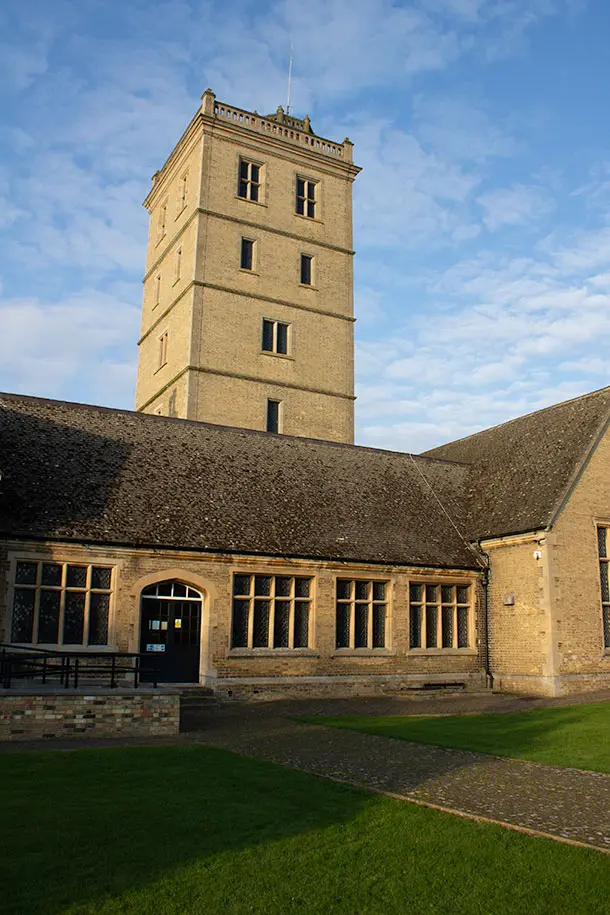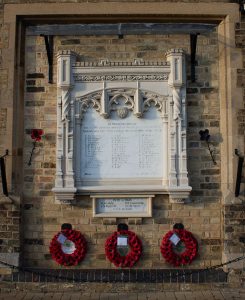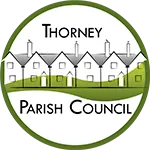The plan, initiated and paid for by Francis 7th Duke of Bedford for a model agricultural village included a water supply and sewerage scheme. The central point of this was the magnificent ‘Jacobean’ style building, with a 96 foot high tower, now known as the Bedford Hall. It is found with other associated buildings east of Station Road.

The building was finished in 1855 at a cost of £22,446 2s 8d and was built from local (Whittlesey) brick and dressed stone from Stibbington. Much of this expenditure is now hidden in the massive pyramidal brick foundations and the cellar plant room where there used to be two huge steam engines.
Fresh water was drawn from the Thorney River, held in a reservoir to settle and be purified and then pumped up the tower cast iron tank on the sixth floor (this is still in place). It was then fed, by gravity, to the houses in the village. Sewage was then collected from the houses, again by gravity, and pumped in to another holding tank in the tower where it was then distributed to the gardens north of the houses on Wisbech Road.
This pumping of water and sewage up to the tanks was done by a pair of double action beam pumps in the cellar, and up through the floor of what is now the entrance to the hall. There were only four other pumps of this kind ever built; two used in London and two in France. These pumps were removed in 1934.

Thorney war memorial on the side of the Bedford Hall. This memorial was originally situated in the Methodist Chapel in Thorney and was moved here in 2017 to improve access to it. There is a matching memorial within Thorney Abbey church.
The Tankyard is also the site of the Thorney Museum and the Annual Thorney Live Charity Music Festival.
